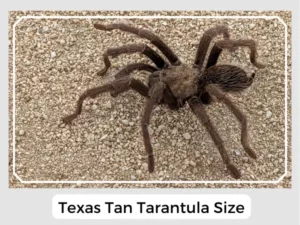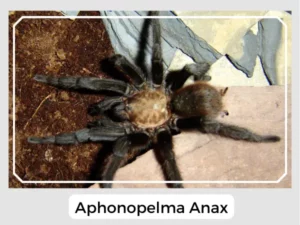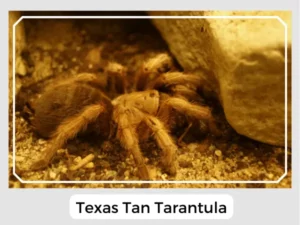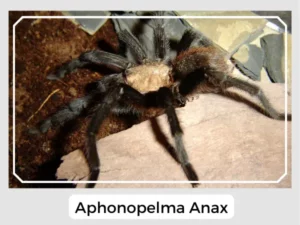The Texas tan tarantula is an interesting spider from North America. These spiders make their homes in dry areas and have a unique way of lining their burrows with silky threads. Explore this blog post to discover exciting facts about this fascinating creature.

Photo Credit: Isaac Miller
The eggs are bright orange, laid inside a sac made of webbing. A single female is capable of laying around 100 eggs after fertilization. The mother is protective of her eggs, turning the web sac to prevent deformations.
After a few weeks, the spiderlings emerge. The babies will stay with their mothers until they are mature enough to fend for themselves.
Like all tarantulas, they do not construct elaborate webbing to capture prey.
Yes, Texas Tan Tarantulas have venom, but it’s generally not harmful to humans and is used to subdue their prey.
Yes, they can bite if threatened or provoked. While the bite might be painful, it’s usually not dangerous for humans.

Photo Credit: Isaac Miller
These tarantulas are integral to their ecosystems, playing the role of both predator and prey. They help control the population of insects like beetles, caterpillars, crickets, grasshoppers, and moths, thus maintaining the ecological balance. They are predominantly nocturnal hunters, using their excellent night vision and sensitive hairs on their legs to detect and capture prey.
Natural Predators: In the wild, these spiders are preyed upon by larger animals, including birds, reptiles, and mammals. Their burrows provide some safety, but they are not impervious to the keen senses of their predators.
Prey-Predator Dynamics: The Texas tan tarantula’s diet is diverse, feeding on various insects and small invertebrates. Their hunting method is an interesting dance of stealth and speed, relying on sudden bursts of movement to snatch up unsuspecting prey.
Relationship with Humans: The relationship between humans and the Texas tan tarantula is one of mutual respect. While they may invoke fear due to their size and venom, they are largely beneficial, controlling pests that could otherwise affect human habitats. They are also subjects of fascination and study, contributing to our understanding of arachnid behavior and ecology.

Photo Credit: Paul MOINE
| Lifespan | Males: 2 years, Females: 40 years |
| Distribution | The United States, mainly Texas as well as northern Mexico |
| Habitat | Dead trees, empty burrows left behind by other animals, natural crevices, or stacks of wood. |
| Diet | Beetles, caterpillars, crickets, grasshoppers, and moths |

Photo Credit: Isaac Miller
In summary, the Texas tan tarantula plays a pivotal role in its ecosystem as a predator and contributes to the natural pest control in human-inhabited areas.
The Texas tan tarantula is an interesting spider from North America. These spiders make their homes in dry areas and have a unique way of lining their burrows with silky threads. Explore this blog post to discover exciting facts about this fascinating creature.

Photo Credit: Isaac Miller
The eggs are bright orange, laid inside a sac made of webbing. A single female is capable of laying around 100 eggs after fertilization. The mother is protective of her eggs, turning the web sac to prevent deformations.
After a few weeks, the spiderlings emerge. The babies will stay with their mothers until they are mature enough to fend for themselves.
Like all tarantulas, they do not construct elaborate webbing to capture prey.
Yes, Texas Tan Tarantulas have venom, but it’s generally not harmful to humans and is used to subdue their prey.
Yes, they can bite if threatened or provoked. While the bite might be painful, it’s usually not dangerous for humans.

Photo Credit: Isaac Miller
These tarantulas are integral to their ecosystems, playing the role of both predator and prey. They help control the population of insects like beetles, caterpillars, crickets, grasshoppers, and moths, thus maintaining the ecological balance. They are predominantly nocturnal hunters, using their excellent night vision and sensitive hairs on their legs to detect and capture prey.
Natural Predators: In the wild, these spiders are preyed upon by larger animals, including birds, reptiles, and mammals. Their burrows provide some safety, but they are not impervious to the keen senses of their predators.
Prey-Predator Dynamics: The Texas tan tarantula’s diet is diverse, feeding on various insects and small invertebrates. Their hunting method is an interesting dance of stealth and speed, relying on sudden bursts of movement to snatch up unsuspecting prey.
Relationship with Humans: The relationship between humans and the Texas tan tarantula is one of mutual respect. While they may invoke fear due to their size and venom, they are largely beneficial, controlling pests that could otherwise affect human habitats. They are also subjects of fascination and study, contributing to our understanding of arachnid behavior and ecology.

Photo Credit: Paul MOINE
| Lifespan | Males: 2 years, Females: 40 years |
| Distribution | The United States, mainly Texas as well as northern Mexico |
| Habitat | Dead trees, empty burrows left behind by other animals, natural crevices, or stacks of wood. |
| Diet | Beetles, caterpillars, crickets, grasshoppers, and moths |

Photo Credit: Isaac Miller
In summary, the Texas tan tarantula plays a pivotal role in its ecosystem as a predator and contributes to the natural pest control in human-inhabited areas.